
Varian Microeconomics Workout
.pdf
(e) No matter what prices Sarah faces, the amount of money she needs to purchase a bundle indi®erent to A must be (higher, lower) than the
amount she needs to purchase a bundle indi®erent to B. |
|
. |
14.5 (2) Bernice's preferences can be represented by u(x; y) = minfx; yg, where x is pairs of earrings and y is dollars to spend on other things. She faces prices (px; py) = (2; 1) and her income is 12.
(a) Draw in pencil on the graph below some of Bernice's indi®erence
curves and her budget constraint. Her optimal bundle is |
|
pairs |
|||||||||||
of earrings and |
|
|
dollars to spend on other things. |
|
|||||||||
|
Dollars for other things |
|
|
|
|
|
|
||||||
16 |
|
|
|
|
|
|
|
|
|
|
|
|
|
|
|
|
|
|
|
|
|
|
|
|
|
||
12 |
|
|
|
|
|
|
|
|
|
|
|
|
|
|
|
|
|
|
|
|
|
|
|
|
|
||
|
|
|
|
|
|
|
|
|
|
|
|
||
8 |
|
|
|
|
|
|
|
|
|
|
|
|
|
|
|
|
|
|
|
|
|
|
|
|
|
||
|
|
|
|
|
|
|
|
|
|
|
|
||
4 |
|
|
|
|
|
|
|
|
|
|
|
|
|
|
|
|
|
|
|
|
|
|
|
|
|
||
|
|
|
|
|
|
|
|
|
|
|
|
||
|
|
|
|
|
|
|
|
|
|
|
|
|
|
|
|
|
|
|
|
|
|
|
|
|
|
|
|
0 |
|
4 |
8 |
|
12 |
16 |
|
|
|||||
|
|
|
|
|
|
Pairs of earrings |
|
||||||
(b) The price of a pair of earrings rises to $3 and Bernice's income stays the same. Using blue ink, draw her new budget constraint on the graph above.
Her new optimal bundle is |
|
pairs of earrings and |
|
dol- |
lars to spend on other things. |
|
|
|
|
(c) What bundle would Bernice choose if she faced the original prices and
had just enough income to reach the new indi®erence curve?
Draw with red ink the budget line that passes through this bundle at the original prices. How much income would Bernice need at the original
prices to have this (red) budget line? |
|
. |
|
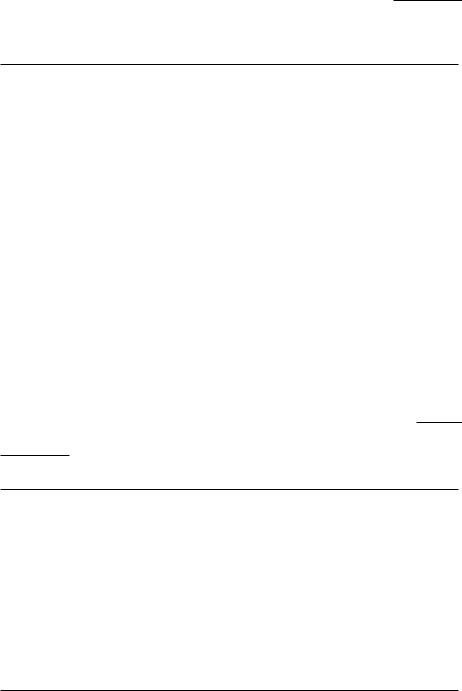
(d) The maximum amount that Bernice would pay to avoid the price
increase is |
|
This is the (compensating, equivalent) variation in |
||
income. |
|
|
. |
|
(e) What bundle would Bernice choose if she faced the new prices and had
just enough income to reach her original indi®erence curve?
Draw with black ink the budget line that passes through this bundle at the new prices. How much income would Bernice have with this budget?
.
(f) In order to be as well-o® as she was with her original bundle, Bernice's
original income would have to rise by |
|
This is the (compensating, |
||
equivalent) variation in income. |
|
|
. |
|
|
|
|||
14.6 (0) Ulrich likes video games and sausages. In fact, his preferences can be represented by u(x; y) = ln(x + 1) + y where x is the number of video games he plays and y is the number of dollars that he spends on sausages. Let px be the price of a video game and m be his income.
(a) Write an expression that says that Ulrich's marginal rate of substitution equals the price ratio. ( Hint: Remember Donald Fribble from
Chapter 6?) |
|
|
|
. |
(b) Since Ulrich has |
|
preferences, you can solve this equa- |
||
tion alone to get his demand function for video games, which is
His demand function for the dollars to spend on sausages is
.
(c) Video games cost $:25 and Ulrich's income is $10. Then Ulrich de-
mands |
|
video games and |
|
|
dollars' worth of sausages. |
|
His utility from this bundle is |
|
|
(Round o® to two decimal |
|||
|
|
|||||
places.) |
|
|
|
|
|
|
(d) If we took away all of Ulrich's video games, how much money would he need to have to spend on sausages to be just as well-o® as before?
.

(e) Now an amusement tax of $.25 is put on video games and is passed
on in full to consumers. With the tax in place, Ulrich demands
video game and |
|
|
dollars' worth of sausages. His utility from this |
|
bundle is |
|
|
(Round o® to two decimal places.) |
|
(f) Now if we took away all of Ulrich's video games, how much money would he have to have to spend on sausages to be just as well-o® as with
the bundle he purchased after the tax was in place? |
|
. |
(g) What is the change in Ulrich's consumer surplus due to the tax?
How much money did the government collect from Ulrich by
means of the tax? |
|
. |
|
14.7 (1) Lolita, an intelligent and charming Holstein cow, consumes only two goods, cow feed (made of ground corn and oats) and hay. Her preferences are represented by the utility function U(x; y) = x ¡x2=2 + y, where x is her consumption of cow feed and y is her consumption of hay. Lolita has been instructed in the mysteries of budgets and optimization and always maximizes her utility subject to her budget constraint. Lolita has an income of $m that she is allowed to spend as she wishes on cow feed and hay. The price of hay is always $1, and the price of cow feed will be denoted by p, where 0 < p · 1.
(a) Write Lolita's inverse demand function for cow feed. (Hint: Lolita's utility function is quasilinear. When y is the numeraire and the price of x is p, the inverse demand function for someone with quasilinear utility
f(x) + y is found by simply setting p = f0(x).) |
|
. |
(b) If the price of cow feed is p and her income is m, how much hay does Lolita choose? (Hint: The money that she doesn't spend on feed is used
to buy hay.) |
|
. |
|
(c) Plug these numbers into her utility function to ¯nd out the utility
level that she enjoys at this price and this income. |
|
. |
(d) Suppose that Lolita's daily income is $3 and that the price of feed is
$:50. What bundle does she buy? |
|
|
What bundle would she |
|
|
|
|||
buy if the price of cow feed rose to $1? |
|
|
. |
|
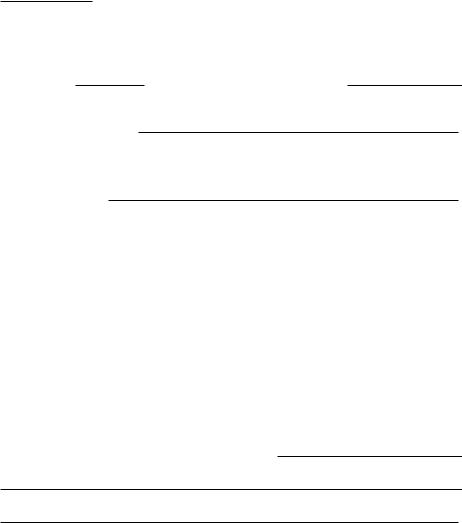
(e) How much money would Lolita be willing to pay to avoid having the
price of cow feed rise to $1? |
|
This amount is known as the |
variation.
(f) Suppose that the price of cow feed rose to $1. How much extra money would you have to pay Lolita to make her as well-o® as she was at the
old prices? This amount is known as the
variation. Which is bigger, the compensating or the equivalent variation,
or are they the same? .
(g) At the price $.50 and income $3, how much (net) consumer's surplus
is Lolita getting? .
14.8 (2) F. Flintstone has quasilinear preferences and his inverse demand function for Brontosaurus Burgers is P (b) = 30 ¡ 2b. Mr. Flintstone is currently consuming 10 burgers at a price of 10 dollars.
(a) How much money would he be willing to pay to have this amount
rather than no burgers at all? |
|
What is his level of (net) |
||
consumer's surplus? |
|
|
. |
|
(b) The town of Bedrock, the only supplier of Brontosaurus Burgers, decides to raise the price from $10 a burger to $14 a burger. What is Mr.
Flintstone's change in consumer's surplus?
.
14.9 (1) Karl Kapitalist is willing to produce p=2 ¡ 20 chairs at every price, p > 40. At prices below 40, he will produce nothing. If the price
of chairs is $100, Karl will produce |
|
chairs. At this price, how |
||
much is his producer's surplus? |
|
|
. |
|
14.10 (2) Ms. Q. Moto loves to ring the church bells for up to 10 hours a day. Where m is expenditure on other goods, and x is hours of bell ringing, her utility is u(m; x) = m + 3x for x · 10. If x > 10, she develops painful blisters and is worse o® than if she didn't ring the bells. Her income is equal to $100 and the sexton allows her to ring the bell for 10 hours.
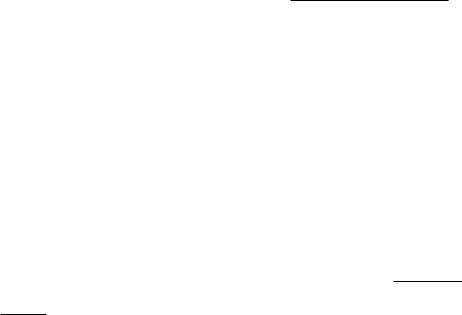
(a) Due to complaints from the villagers, the sexton has decided to restrict Ms. Moto to 5 hours of bell ringing per day. This is bad news for Ms.
Moto. In fact she regards it as just as bad as losing |
|
dollars of |
income. |
|
|
(b) The sexton relents and o®ers to let her ring the bells as much as she likes so long as she pays $2 per hour for the privilege. How much ringing
does she do now? |
|
|
This tax on her activities is as bad as |
|
a loss of how much income? |
|
|
. |
|
(c) The villagers continue to complain. The sexton raises the price of bell
ringing to $4 an hour. How much ringing does she do now?
This tax, as compared to the situation in which she could ring
the bells for free, is as bad as a loss of how much income? |
|
. |

Some problems in this chapter will ask you to construct the market demand curve from individual demand curves. The market demand at any given price is simply the sum of the individual demands at that price. The key thing to remember in going from individual demands to the market demand is to add quantities. Graphically, you sum the individual demands horizontally to get the market demand. The market demand curve will have a kink in it whenever the market price is high enough that some individual demand becomes zero.
Sometimes you will need to ¯nd a consumer's reservation price for a good. Recall that the reservation price is the price that makes the consumer indi®erent between having the good at that price and not having the good at all. Mathematically, the reservation price p¤ satis¯es u(0; m) = u(1; m ¡ p¤), where m is income and the quantity of the other good is measured in dollars.
Finally, some of the problems ask you to calculate price and/or income elasticities of demand. These problems are especially easy if you know a little calculus. If the demand function is D(p), and you want to calculate the price elasticity of demand when the price is p, you only need to calculate dD(p)=dp and multiply it by p=q.
15.0 Warm Up Exercise. (Calculating elasticities.) Here are some drills on price elasticities. For each demand function, ¯nd an expression for the price elasticity of demand. The answer will typically be a function of the price, p. As an example, consider the linear demand curve, D(p) = 30 ¡ 6p. Then dD(p)=dp = ¡6 and p=q = p=(30 ¡ 6p), so the price elasticity of demand is ¡6p=(30 ¡ 6p).
(a) D(p) = 60 ¡ p. |
|
. |
|||
(b) D(p) = a ¡ bp. |
|
|
. |
||
(c) D(p) = 40p¡2. |
|
|
. |
||
(d) D(p) = Ap¡b. |
|
|
. |
||
(e) D(p) = (p + 3)¡2. |
|
. |
|
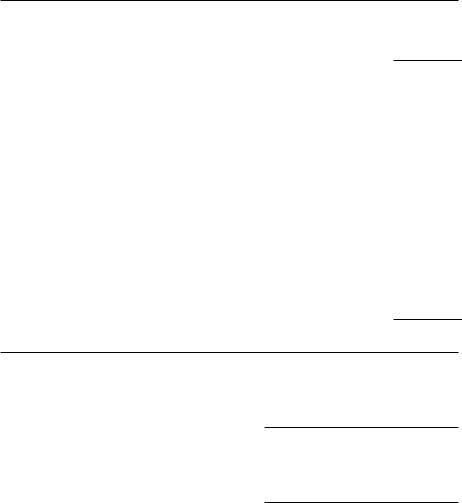
(f) D(p) = (p + a)¡b. |
|
. |
|
15.1 (0) In Gas Pump, South Dakota, there are two kinds of consumers, Buick owners and Dodge owners. Every Buick owner has a demand function for gasoline DB(p) = 20 ¡ 5p for p · 4 and DB(p) = 0 if p > 4. Every Dodge owner has a demand function DD(p) = 15 ¡ 3p for p · 5 and DD(p) = 0 for p > 5. (Quantities are measured in gallons per week and price is measured in dollars.) Suppose that Gas Pump has 150 consumers, 100 Buick owners, and 50 Dodge owners.
(a) If the price is $3, what is the total amount demanded by each indi-
vidual Buick Owner? |
|
And by each individual Dodge owner? |
.
(b) What is the total amount demanded by all Buick owners?
What is the total amount demanded by all Dodge owners? |
|
. |
(c) What is the total amount demanded by all consumers in Gas Pump
at a price of 3? |
|
. |
|
(d)On the graph below, use blue ink to draw the demand curve representing the total demand by Buick owners. Use black ink to draw the demand curve representing total demand by Dodge owners. Use red ink to draw the market demand curve for the whole town.
(e)At what prices does the market demand curve have kinks?
.
(f) When the price of gasoline is $1 per gallon, how much does weekly
demand fall when price rises by 10 cents? .
(g) When the price of gasoline is $4.50 per gallon, how much does weekly
demand fall when price rises by 10 cents? .
(h) When the price of gasoline is $10 per |
gallon, how much does weekly |
||
demand fall when price rises by 10 cents? |
|
|
. |
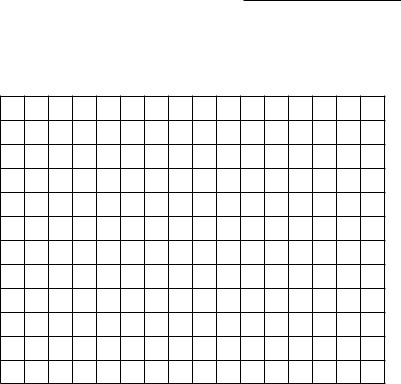
Dollars per gallon
6
5
4
3
2
1
0 |
500 |
1000 |
1500 |
2000 |
2500 |
3000 |
3500 |
4000 |
|
|
|
|
|
|
Gallons per week |
||
15.2 (0) For each of the following demand curves, compute the inverse demand curve.
(a) D(p) = maxf10 ¡ 2p; 0g. |
|
. |
|||||
|
|||||||
(b) D(p) = 100=p |
|
. |
|
|
|
|
. |
p |
|||||||
(c) ln D(p) = 10 ¡ 4p. |
|
|
|
. |
|||
(d) ln D(p) = ln 20 ¡ 2 ln p. |
|
|
. |
||||
15.3 (0) The demand function of dog breeders for electric dog polishers is qb = maxf200¡p; 0g, and the demand function of pet owners for electric dog polishers is qo = maxf90 ¡ 4p; 0g.
(a) At price p, what is the price elasticity of dog breeders' demand for
electric dog polishers? |
|
What is the price elasticity of |
||
pet owners' demand? |
|
|
. |
|
|
|
|||

(b) At what price is the dog breeders' elasticity equal to ¡1? |
|
At what price is the pet owners' elasticity equal to ¡1? |
. |
(c)On the graph below, draw the dog breeders' demand curve in blue ink, the pet owners' demand curve in red ink, and the market demand curve in pencil.
(d)Find a nonzero price at which there is positive total demand for dog polishers and at which there is a kink in the demand curve.
What is the market demand function for prices below the kink?
What is the market demand function for prices above the
kink? |
|
. |
(e) Where on the market demand curve is the price elasticity equal to
¡1? At what price will the revenue from the sale of electric
dog polishers be maximized? If the goal of the sellers is to maximize revenue, will electric dog polishers be sold to breeders only, to
pet owners only, or to both? |
|
|
|
|
|
|
|
|
|
|
. |
||||
Price |
|
|
|
|
|
|
|
|
|
|
|
|
|
|
|
300 |
|
|
|
|
|
|
|
|
|
|
|
|
|
|
|
|
|
|
|
|
|
|
|
|
|
|
|
|
|
|
|
250 |
|
|
|
|
|
|
|
|
|
|
|
|
|
|
|
|
|
|
|
|
|
|
|
|
|
|
|
|
|
|
|
|
|
|
|
|
|
|
|
|
|
|
|
|
|
|
|
200 |
|
|
|
|
|
|
|
|
|
|
|
|
|
|
|
|
|
|
|
|
|
|
|
|
|
|
|
|
|
|
|
|
|
|
|
|
|
|
|
|
|
|
|
|
|
|
|
150 |
|
|
|
|
|
|
|
|
|
|
|
|
|
|
|
|
|
|
|
|
|
|
|
|
|
|
|
|
|
|
|
|
|
|
|
|
|
|
|
|
|
|
|
|
|
|
|
100 |
|
|
|
|
|
|
|
|
|
|
|
|
|
|
|
|
|
|
|
|
|
|
|
|
|
|
|
|
|
|
|
|
|
|
|
|
|
|
|
|
|
|
|
|
|
|
|
50 |
|
|
|
|
|
|
|
|
|
|
|
|
|
|
|
|
|
|
|
|
|
|
|
|
|
|
|
|
|
|
|
|
|
|
|
|
|
|
|
|
|
|
|
|
|
|
|
|
|
|
|
|
|
|
|
|
|
|
|
|
|
|
|
|
|
|
|
|
|
|
|
|
|
|
|
|
|
|
|
0 |
50 |
|
100 |
150 |
200 |
250 |
300 |
|
|||||||
|
|
|
|
|
|
|
|
|
|
|
|
Quantity |
|||
